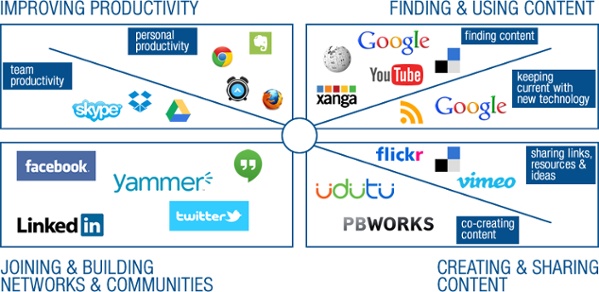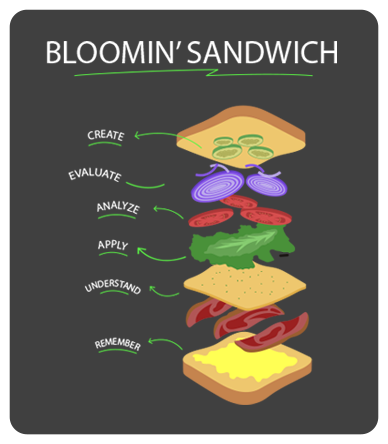It is without a doubt a time where people have a vast amount of information at their fingertips. There is never a question that can be unanswered since “just Google it” has been added to our vocabularies. As such, an increased amount of informal learning takes place on a daily basis.
The way we use the internet has changed over the years. Before it used to be a resource we used to find information. Now we use it as a way to express opinions, connect with people, learn and share our learning. Additionally, people can communicate what they are learning through sizable social networks with 1 billion+ global users. That’s a lot of people – and a lot of information!
The increase in the number of mobile devices has led to the increased adoption of social networks all over the world. Anyone can publish, share, find, and comment on content anytime, anywhere. The lines between being online and offline have become blurred along with the use of social media for personal and professional use.
So how do you harness the engagement created by social learning in formal learning? With the goal of retaining and transferring information, is it as easy as integrating curriculums with social learning tools? The answer is yes. Many universities are already using social tools in addition to classroom learning. Social networking plays a key role in motivation, confidence and willingness to engage in deeper levels of learning.

Think about the way people work together in an office. They pop over a cubicle to ask a question, they sit together over a document, they hold meetings and give presentations. Isn’t this similar to social networks? You send out a message to a colleague or friend when you have a question, you chat online to discuss your opinions or offer assistance, you post your ideas online. How can you harness this collaboration and learning in the workplace? Social learning can extend and enhance learner achievement and collaborative learning expertise.
It makes sense to leverage the existing tools that people are using. There is usually no training needed because they are tools being used on a daily basis by the average internet user. Likewise, these social platforms are also engaging. The population spends an incredible amount of time on social networks on a daily basis. The key to creating a learning system that works involves practices that are able to adapt to the evolving world around us. As Rob Koper has discovered, a well-known Professor of Education Technology,
“Self-organized learning networks provide a base for the establishment of a form of education that goes beyond course and curriculum centric models, and envisions a learner-centred and learner controlled model of lifelong learning.”
Empowering learners and using an environment they are already comfortable in might just change the way we have come to know traditional education. Whether you are a business who needs to train employees, a school who needs to educate students, or an executive who needs to inform shareholders, the world of learning is transforming. They are already here – are you?
Koper, R. (2004b). Use of the Semantic Web to Solve Some Basic Problems in Education: Increase Flexible, Distributed Lifelong Learning, Decrease Teacher's Workload. Journal of Interactive Media in Education, 6. [http://www-jime.open.ac.uk/articles/abstract/10.5334/2004-6-carey/]






